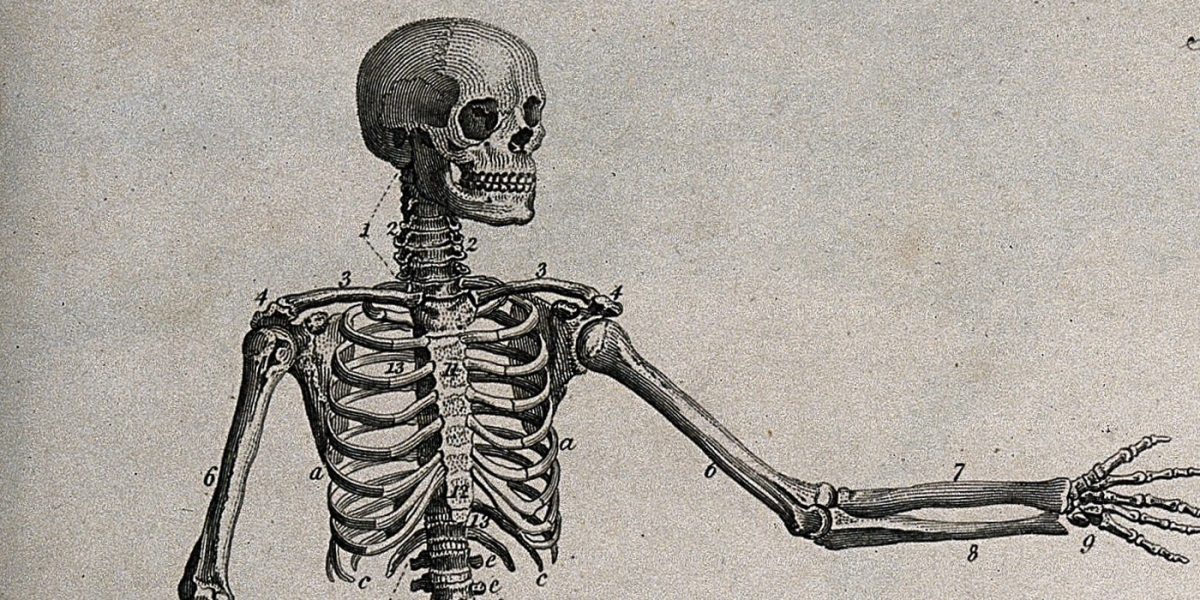
Bones are more than just spooky installments – they are the structural elements of the human body, like the steel girders of a skyscraper. They contain calcium-rich minerals and collagen fibers which are usually aligned along the long axis of the bone, known as the major axis. As a result, bones typically have material properties that are stronger in the axial direction. Nowadays, human bones can regularly experience forces much larger than loads that were experienced thousands of years ago. Especially in sports like powerlifting, these loads may be applied to bones in directions different than normally experienced during development. How does this affect bone structure in athletes today?
From an evolutionary perspective, bones developed to support the weight of an organism. Like muscles developed to contract and generate force, bones developed to support the body under gravity and during muscle contraction. Animals have evolved many ways to move, involving specific forces applied to bones. This begs the question; in animals with different bone loading, are bones shaped differently to support these diverse loads? Emmanuel De Margerie, et. al sought to answer this question in a 2004 study. During the flapping of a bird’s wing, torsional, or twisting, loading is experienced in the wing. Through histology, the staining of proteins in a biological sample, De Margerie argues that the hollow construction of bird bones is due to evolutionary needs. Birds who rely on short flights involving flapping of the wings tended to have more circular bones with less organized collagen fibers. Think of this like a paper towel roll versus just a strip of cardboard – the paper towel roll can support much more twisting than the strip of cardboard before crumpling. This is the reason, De Margerie argues, that bird bones exhibit these shapes. Interestingly, in the leg bones, this hollow cylinder structure was not seen. The leg bones of these birds appeared more like the classical shape of a leg bone, and De Margerie argues that this is due to the need to support weight during standing and walking.

How does this connect to modern sports? Like the flapping of a bird’s wing, there are many motions in sports that exert forces on bones in different ways. Bones, like all living systems, respond to stimuli. In contrast to the evolutionary development of bones, mechanical loading (the application of forces) causes cells in the bone to remodel and rearrange their surroundings. Of particular interest to Rachel Taylor, et. al in this study is the different loadings of the sides of the body in tennis. Using X-ray images of tennis players, the researchers saw a clear increase in bone mineral density of the humerus, a bone in the arm, on the side which the players used to hold a racket.

Taylor approaches understanding the mechanism behind this by breaking down the bones into tiny, simulated pieces and observing these pieces during a tennis serve, a technique known as finite modeling. Matching the models to video analysis of the forces experienced during a serve, the authors show that the regions of increased bone mineral density are regions where the bone experiences more loading during the serve, which reach 1600N (about the same as lifting 360lb) as the ball is accelerated to speeds over 100mph.
Despite these advances in understanding of bone biomechanics, it remains to be seen how bone remodeling changes in response to different loadings. This is a question of nature vs. nurture – can the torsional and bending forces on athletes’ bones cause remodeling towards shapes that better support these forces? Either way, make sure to show your bones some love by getting up and moving around.
